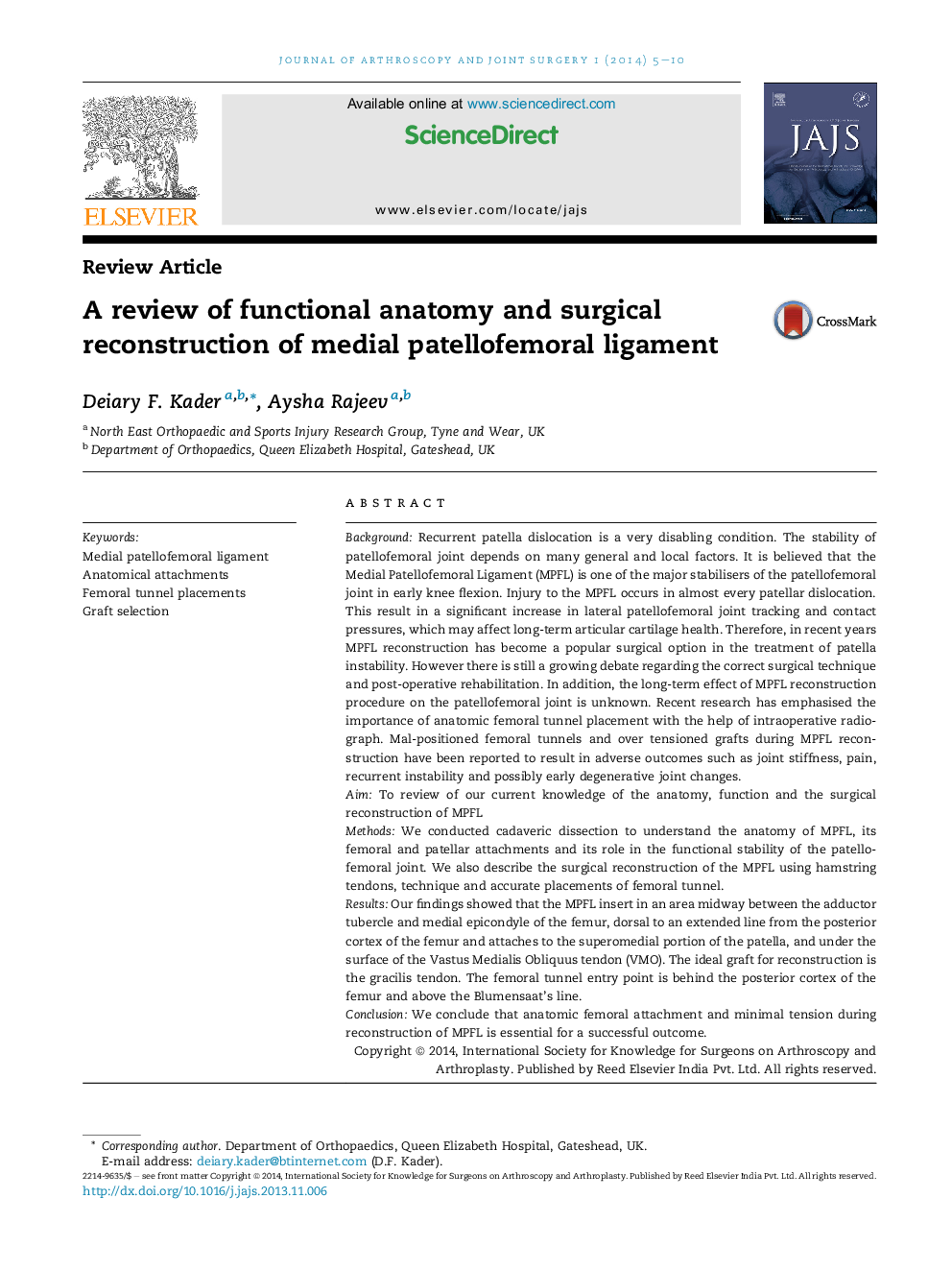| Article ID | Journal | Published Year | Pages | File Type |
|---|---|---|---|---|
| 3245137 | Journal of Arthroscopy and Joint Surgery | 2014 | 6 Pages |
BackgroundRecurrent patella dislocation is a very disabling condition. The stability of patellofemoral joint depends on many general and local factors. It is believed that the Medial Patellofemoral Ligament (MPFL) is one of the major stabilisers of the patellofemoral joint in early knee flexion. Injury to the MPFL occurs in almost every patellar dislocation. This result in a significant increase in lateral patellofemoral joint tracking and contact pressures, which may affect long-term articular cartilage health. Therefore, in recent years MPFL reconstruction has become a popular surgical option in the treatment of patella instability. However there is still a growing debate regarding the correct surgical technique and post-operative rehabilitation. In addition, the long-term effect of MPFL reconstruction procedure on the patellofemoral joint is unknown. Recent research has emphasised the importance of anatomic femoral tunnel placement with the help of intraoperative radiograph. Mal-positioned femoral tunnels and over tensioned grafts during MPFL reconstruction have been reported to result in adverse outcomes such as joint stiffness, pain, recurrent instability and possibly early degenerative joint changes.AimTo review of our current knowledge of the anatomy, function and the surgical reconstruction of MPFLMethodsWe conducted cadaveric dissection to understand the anatomy of MPFL, its femoral and patellar attachments and its role in the functional stability of the patello-femoral joint. We also describe the surgical reconstruction of the MPFL using hamstring tendons, technique and accurate placements of femoral tunnel.ResultsOur findings showed that the MPFL insert in an area midway between the adductor tubercle and medial epicondyle of the femur, dorsal to an extended line from the posterior cortex of the femur and attaches to the superomedial portion of the patella, and under the surface of the Vastus Medialis Obliquus tendon (VMO). The ideal graft for reconstruction is the gracilis tendon. The femoral tunnel entry point is behind the posterior cortex of the femur and above the Blumensaat's line.ConclusionWe conclude that anatomic femoral attachment and minimal tension during reconstruction of MPFL is essential for a successful outcome.
